This article needs additional citations for verification .(February 2024) |
| |||||
| Decades: | |||||
|---|---|---|---|---|---|
| See also: | Other events of 1833 Years in Iran | ||||
The following lists events that have happened in 1833 in the Qajar dynasty, Iran.
This article needs additional citations for verification .(February 2024) |
| |||||
| Decades: | |||||
|---|---|---|---|---|---|
| See also: | Other events of 1833 Years in Iran | ||||
The following lists events that have happened in 1833 in the Qajar dynasty, Iran.

Abbas Mirza was the Qajar crown prince of Iran during the reign of his father Fath-Ali Shah Qajar. As governor of the vulnerable Azerbaijan province, he played a crucial part in the two wars against the Russian Empire, as well as the war of 1821–1823 against the Ottoman Empire. He is also recognized for leading Iran's first reform and modernization attempts with the help of his ministers Mirza Bozorg Qa'em-Maqam and Abol-Qasem Qa'em-Maqam.
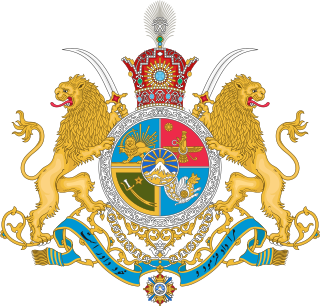
The Pahlavi dynasty was the last Iranian royal dynasty that ruled for roughly 53 years between 1925 and 1979. The dynasty was founded by Reza Shah Pahlavi, a non-aristocratic Mazanderani soldier in modern times, who took on the name of the Pahlavi language spoken in the pre-Islamic Sasanian Empire to strengthen his nationalist credentials.

The Qajar dynasty was an Iranian royal dynasty founded by Mohammad Khan of the Qoyunlu clan of the Turkoman Qajar tribe.
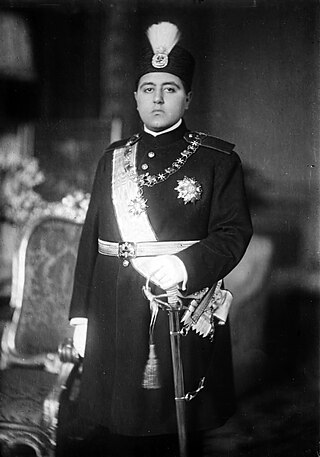
Ahmad Shah Qajar was the shah of Iran (Persia) from 16 July 1909 to 15 December 1925, and the last ruling member of the Qajar dynasty.

Agha Mohammad Khan Qajar, also known by his regnal name of Agha Mohammad Shah, was the founder of the Qajar dynasty of Iran, ruling from 1789 to 1797 as Shah. Originally a chieftain of the Quwanlu branch of the Qajar tribe, Agha Mohammad Khan was enthroned as the king of Iran in 1789, but was not officially crowned until March 1796, having deposed Lotf Ali Khan of the Zand dynasty in 1794.

Mohammad Ali Shah Qajar was the sixth shah of the Qajar dynasty and remained the Shah of Iran from 8 January 1907 until being deposed on 16 July 1909. He was furthermore the grandson of Iran’s early moderniser Amir Kabir, through the maternal side.

Mohammad Shah was the third Qajar shah of Iran from 1834 to 1848, inheriting the throne from his grandfather, Fath-Ali Shah. From a young age, Mohammad Mirza was under the tutelage of Haji Mirza Aqasi, a local dervish from Tabriz whose teachings influenced the young prince to become a Sufi-king later in his life. After his father Abbas Mirza died in 1833, Mohammad Mirza became the crown prince of Iran and was assigned with the governorship of Azarbaijan. After the death of Fath-Ali Shah in 1834, some of his sons including Hossein Ali Mirza and Ali Mirza Zel as-Soltan rose up as claimants to the throne. With the support of English and Russian forces, Mohammad Shah suppressed the rebellious princes and asserted his authority.

Fath-Ali Shah Qajar was the second Shah of Qajar Iran. He reigned from 17 June 1797 until his death on 24 October 1834. His reign saw the irrevocable ceding of Iran's northern territories in the Caucasus, comprising what is nowadays Georgia, Dagestan, Azerbaijan, and Armenia, to the Russian Empire following the Russo-Persian Wars of 1804–1813 and 1826–1828 and the resulting treaties of Gulistan and Turkmenchay. These two treaties are closely tied to Fath-Ali Shah's legacy amongst Iranians, who often view him as a weak ruler.

Mozaffar ad-Din Shah Qajar was the fifth Qajar shah of Iran, reigning from 1896 until his death in 1907. He is often credited with the creation of the Persian Constitution of 1906, which he approved of in one of his final acts as shah.

The Shāh Abdol-Azīm Shrine, also known as Shabdolazim, located in Rey, Iran, contains the tomb of ‘Abdul ‘Adhīm ibn ‘Abdillāh al-Hasanī. Shah Abdol Azim was a fifth generation descendant of Hasan ibn ‘Alī and a companion of Muhammad al-Taqī. He was entombed here after his death in the 9th century.

Reza-Qoli Khan Hedayat was an Iranian literary historian, administrator, and poet in 19th-century Qajar Iran.

Qajar art was the architecture, paintings, and other art forms produced under the Qajar dynasty, which lasted from 1781 to 1925 in Iran (Persia).

The Russo-Persian War of 1826–1828 was the last major military conflict between the Russian Empire and Qajar Iran, which was fought over territorial disputes in the South Caucasus region.
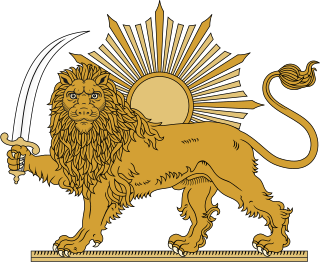
The Lion and Sun is one of the main emblems of Iran (Persia), and was an element in Iran's national flag until the 1979 revolution and is still commonly used by nationalists and opposition groups of the Islamic Republic government. The motif, which illustrates ancient and modern Iranian traditions, became a popular symbol in Iran in the 12th century. The lion and sun symbol is based largely on astronomical and astrological configurations: the ancient sign of the sun in the house of Leo, which itself is traced back to Babylonian astrology and Near Eastern traditions.
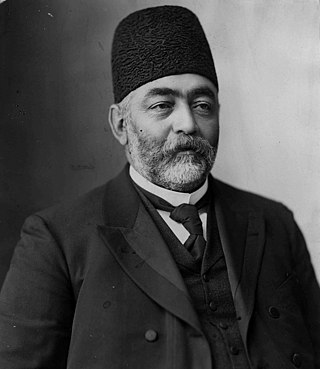
Mirza Ali Asghar Khan, also known by his honorific titles of Amin al-Soltan and Atabak, served as Prime Minister of Iran from 1887 to 1896 under Nasereddin Shah, from 1898 to 1904 under Mozaffareddin Shah and from May 1907 until his assassination in August 1907 under Moahammad Ali Shah.
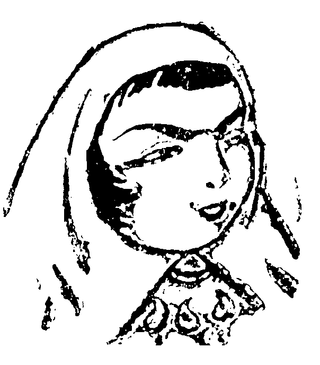
Agha Baji Javanshir was an Iranian poet and public speaker, who was the twelfth wife of Fath-Ali Shah Qajar, the Qajar shah (king) of Iran. She was the daughter of Ibrahim Khalil Khan, the governor of the Karabakh Khanate.

The Guarded Domains of Iran, alternatively the Sublime State of Iran and commonly called Qajar Iran, Qajar Persia or the Qajar Empire, was the Iranian state under the rule of the Qajar dynasty, which was of Turkic origin, specifically from the Qajar tribe, from 1789 to 1925. The Qajar family took full control of Iran in 1794, deposing Lotf 'Ali Khan, the last Shah of the Zand dynasty, and re-asserted Iranian sovereignty over large parts of the Caucasus. In 1796, Agha Mohammad Khan Qajar seized Mashhad with ease, putting an end to the Afsharid dynasty. He was formally crowned as Shah after his punitive campaign against Iran's Georgian subjects.

The Shah Mosque, also known as the Soltāni Mosque meaning "royal", renamed the Imam Mosque, after the 1979 Iranian Revolution, is a principal mosque in the northern section of the Grand Bazaar in Tehran, Iran.

Abdollah Mirza Qajar was an Iranian prince (shahzadeh) of the Qajar dynasty, the 11th son of Fath-Ali Shah, king of Qajar Iran from 1797 to 1834. Abdollah was the governor of Zanjan. He had two children, Mohsen Mirza and Shams al-Molok, with his wife. Other than that, he had 19 sons and 9 daughters from his concubines.
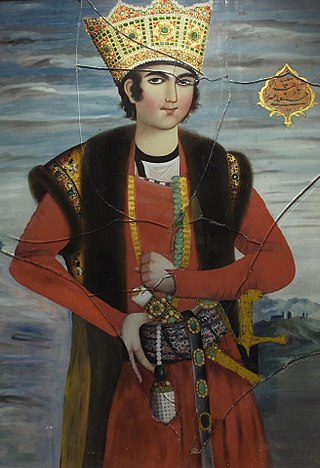
Hossein Ali Mirza, a son of Fath-Ali Shah, was the Governor of Fars and pretender to the throne of Qajar Iran.